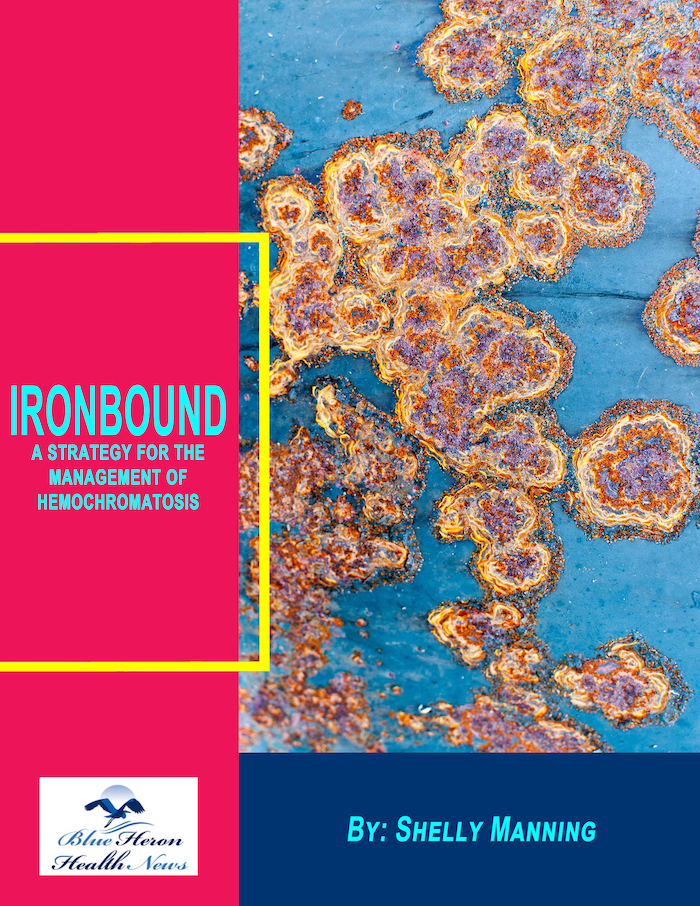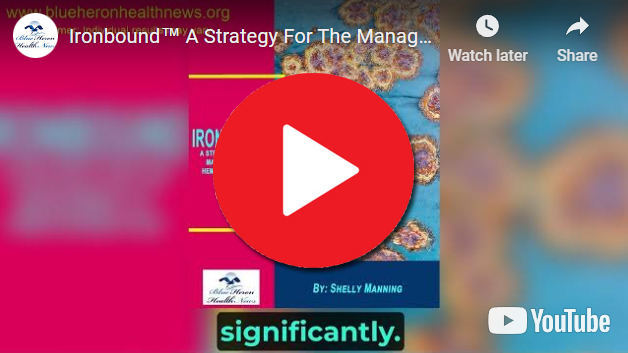
Ironbound™ A Strategy For The Management Of Hemochromatosis By Shelly Manning The 5 superfoods explained by Shelly Manning in this eBook play an important role in reducing the levels of HCT. The absorption of the excessive amount of iron by the genes of HCT can be blocked by these superfoods. In this way, the information provided in this eBook can help in resolving the problem of excess iron in your body naturally without any risk of side effects.
What are the complications of untreated hemochromatosis?
Complications of Untreated Hemochromatosis
Untreated hemochromatosis can lead to severe and potentially life-threatening complications due to excessive iron accumulation in various organs. The complications arise primarily from the toxic effects of iron-induced oxidative stress and inflammation. Here is a detailed overview of the complications associated with untreated hemochromatosis:
1. Liver Complications
A. Liver Fibrosis and Cirrhosis
- Mechanism: Chronic iron overload causes oxidative stress and inflammation in the liver, leading to the activation of hepatic stellate cells, which produce fibrous tissue.
- Outcome: Progressive fibrosis can lead to cirrhosis, characterized by widespread liver scarring, disrupted liver architecture, and impaired liver function.
- Symptoms: Symptoms of cirrhosis include jaundice, ascites (fluid accumulation in the abdomen), peripheral edema, variceal bleeding (from esophageal varices), and hepatic encephalopathy (confusion, altered mental status).
B. Hepatocellular Carcinoma (HCC)
- Mechanism: The presence of cirrhosis and chronic oxidative stress increases the risk of developing hepatocellular carcinoma, a primary liver cancer.
- Outcome: HCC is a serious and often fatal complication of untreated hemochromatosis. Early detection and treatment are crucial for improving survival rates.
- Symptoms: Symptoms may include weight loss, loss of appetite, upper abdominal pain, jaundice, and worsening liver function.
2. Pancreatic Complications
A. Diabetes Mellitus
- Mechanism: Iron deposition in the pancreas damages insulin-producing beta cells, leading to insulin deficiency and impaired glucose metabolism.
- Outcome: This can result in diabetes mellitus, often referred to as “bronze diabetes” due to the combination of hyperpigmentation and diabetes in hemochromatosis patients.
- Symptoms: Symptoms include increased thirst, frequent urination, fatigue, blurred vision, and unexplained weight loss.
3. Cardiac Complications
A. Cardiomyopathy
- Mechanism: Iron overload in the heart muscle (myocardium) leads to oxidative damage, inflammation, and fibrosis, impairing cardiac function.
- Outcome: Cardiomyopathy can progress to heart failure if left untreated.
- Symptoms: Symptoms of heart failure include shortness of breath, fatigue, swelling in the legs, ankles, and feet (edema), and irregular heartbeats (arrhythmias).
B. Arrhythmias
- Mechanism: Iron deposition can disrupt the electrical conduction system of the heart, leading to arrhythmias.
- Outcome: Arrhythmias can range from benign to life-threatening conditions such as atrial fibrillation or ventricular tachycardia.
- Symptoms: Symptoms include palpitations, dizziness, fainting (syncope), and chest pain.
4. Endocrine Complications
A. Hypogonadism
- Mechanism: Iron accumulation in the pituitary gland and testes can impair hormone production, leading to hypogonadism.
- Outcome: Hypogonadism results in decreased production of sex hormones, affecting reproductive and sexual health.
- Symptoms: Symptoms in men include reduced libido, erectile dysfunction, testicular atrophy, and infertility. In women, symptoms include irregular menstrual cycles and early menopause.
B. Hypothyroidism
- Mechanism: Iron overload can affect the thyroid gland, impairing its function.
- Outcome: Hypothyroidism can result in a slowdown of metabolic processes.
- Symptoms: Symptoms include fatigue, weight gain, cold intolerance, dry skin, and constipation.
5. Joint Complications
A. Arthropathy
- Mechanism: Iron deposition in the joints leads to chronic inflammation and degenerative changes.
- Outcome: Hemochromatosis-related arthropathy is a form of arthritis that primarily affects the hands, particularly the second and third metacarpophalangeal joints (knuckles), but can also involve other joints.
- Symptoms: Symptoms include joint pain, stiffness, swelling, and reduced range of motion.
6. Skin Complications
A. Hyperpigmentation
- Mechanism: Iron deposits in the skin, along with increased melanin production, cause a characteristic bronze or gray discoloration.
- Outcome: While not harmful, hyperpigmentation can be a cosmetic concern and an indicator of underlying systemic iron overload.
- Symptoms: The skin appears darker, especially in sun-exposed areas.
7. Other Complications
A. Fatigue and Weakness
- Mechanism: Chronic iron overload and its systemic effects can lead to persistent fatigue and general weakness.
- Outcome: This can significantly affect the quality of life and daily functioning.
- Symptoms: Persistent tiredness, lack of energy, and muscle weakness.
B. Increased Risk of Infections
- Mechanism: Iron overload can impair immune function and provide a favorable environment for certain pathogens, such as Vibrio vulnificus and Yersinia enterocolitica.
- Outcome: Increased susceptibility to infections, which can be severe and life-threatening in individuals with hemochromatosis.
- Symptoms: Symptoms depend on the type of infection but may include fever, chills, pain, and swelling.
Diagnosis and Monitoring
1. Laboratory Tests
- Serum Ferritin: Elevated levels indicate increased iron stores.
- Transferrin Saturation: High levels suggest increased iron absorption and overload.
- Liver Function Tests: Elevated ALT and AST levels indicate liver injury.
2. Genetic Testing
- HFE Gene Testing: Identifies mutations such as C282Y and H63D associated with hereditary hemochromatosis.
3. Imaging Studies
- MRI: Magnetic resonance imaging can quantify liver iron concentration and assess the extent of iron overload.
- Ultrasound: Detects liver enlargement, cirrhosis, and other structural abnormalities.
4. Liver Biopsy
- Histology: Confirms iron overload by demonstrating iron deposits in liver tissue and assesses the degree of fibrosis or cirrhosis.
- Iron Staining: Stains such as Prussian blue visualize iron deposits in liver cells.
Management and Prevention
1. Phlebotomy
- Mechanism: Regular blood removal to reduce iron levels.
- Frequency: Initially weekly or biweekly until iron levels normalize, followed by maintenance phlebotomies every few months.
2. Iron Chelation Therapy
- Use: For patients who cannot tolerate phlebotomy or have severe iron overload.
- Medications: Deferoxamine, deferasirox, and deferiprone, which bind to excess iron and facilitate its excretion.
3. Dietary Management
- Iron Intake: Avoid iron supplements and limit dietary iron intake.
- Vitamin C: Reduce consumption of vitamin C supplements, as vitamin C enhances iron absorption.
- Alcohol: Limit alcohol intake to reduce the risk of liver damage.
4. Monitoring and Follow-Up
- Regular Monitoring: Periodic assessment of iron levels, liver function tests, and imaging studies to monitor iron load and organ health.
- Screening for Complications: Regular screening for complications such as liver disease progression, cirrhosis, hepatocellular carcinoma, and diabetes.
5. Lifestyle Modifications
- Avoid Raw Shellfish: Individuals with hemochromatosis should avoid raw shellfish to reduce the risk of infections like Vibrio vulnificus.
- Healthy Diet: Emphasize a balanced diet rich in fruits, vegetables, whole grains, and lean proteins, while avoiding foods high in iron.
Conclusion
Untreated hemochromatosis can lead to severe complications affecting the liver, pancreas, heart, endocrine system, joints, skin, and overall well-being. These complications arise from chronic iron overload, causing oxidative stress, inflammation, and organ damage. Early diagnosis, regular monitoring, and appropriate treatment are essential to prevent or mitigate these complications. Phlebotomy, iron chelation therapy, dietary management, and lifestyle modifications are crucial for managing hemochromatosis and improving patient outcomes.
Ironbound™ A Strategy For The Management Of Hemochromatosis By Shelly Manning The 5 superfoods explained by Shelly Manning in this eBook play an important role in reducing the levels of HCT. The absorption of the excessive amount of iron by the genes of HCT can be blocked by these superfoods. In this way, the information provided in this eBook can help in resolving the problem of excess iron in your body naturally without any risk of side effects.
